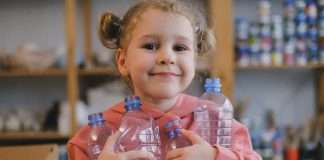We are a part of Amazon Affiliates
 Toddlers. They make no sense, amiright? Does anyone really know what level of behavior to expect from them? How do we set boundaries while also respecting their underdeveloped impulse control? I am going to tell you how to respond to misbehavior and how to teach desired behaviors.
Toddlers. They make no sense, amiright? Does anyone really know what level of behavior to expect from them? How do we set boundaries while also respecting their underdeveloped impulse control? I am going to tell you how to respond to misbehavior and how to teach desired behaviors.
Toddler Style Responses
When you’re dealing with behavior in the moment, you need an action plan. With toddlers, this action plan never involves a long-winded explanation (Why? Because they aren’t listening and they won’t get it). Usually, no explanation at all is best, but if you must, use one sentence such as, “Uh oh, hitting makes your friend sad.” What your action plan does include is one of the following: removing your child, removing yourself, or removing an object. If your child is throwing rocks at the park, you leave the park. If he hits you, you walk away. And if he’s ripping a book, you take it away.
A few things are key. First of all, your reaction is immediate. You don’t give warnings or impart the consequence later on. Second, your consequence must relate directly to the behavior. Using one of the three removal options above helps you ensure this. Third, and this makes alllll the difference in your effectiveness, you must act calmly and empathetically. You might say something like, “This is so sad. We need to leave the park now,” and after his protests, you’ll continue to respond empathetically, “I know! You love the park,” (But you are still leaving—no giving in here). Many parents feel they need to “act mean” to get their point across, but truly a harsh tone or illogical punishment puts your kid in fight or flight. Within this biological response, learning cannot take place. With logic and empathy, you can actually teach your child, which is what you want to do. You also get to stay calm and positive so you don’t end up drained.
Time In
As we all know, toddlers lose it. No matter how logical, consequences can definitely set them off. You need a plan for this too. Firstly, you are not going back to the park or buying the toy. You aren’t going to “give in” per se. However, you need to continue to employ empathy as your key ingredient.
Time In means you sit with your child and lovingly help them become calm when they are out of control. Time In is used specifically for emotional regulation. It is NOT a response to misbehavior. We don’t do Time In when our kid spits ice cream on the window, but we can when she melts down (no pun intended) because “Ohhh no, looks like no more ice cream.” I’ve simply sat down on the floor and hugged my toddler while validating how sad she was that I put a toy away as a consequence of misusing it. Some kids do best if you go into a dimly lit room and hold them. Others don’t want to be held and you can just sit there with them.
When a tantrum starts, the last thing you want to do is punish the tantrum itself. Instead, you need to respond directly to the fact that your child is not in control of her emotions and help her get that control back. We need to regulate emotions to get our toddlers back into a state where they can learn.
An important note on Time In. If your child is hurting you, put them down. If you need to leave the room to keep from being hurt, or if it’s more useful in calming you kid, it’s ok. Time Out (which is different than Time In because your child is isolated) is fine as long as you use it for the same purposes I’ve described. You’ll want to calmly and kindly explain to your little one, “it looks like you need to calm down. I’ll wait until you are calm,” and then happily welcome them back after. Getting calm is the real purpose of Time Out, but there’s a cultural perception that Time Out is a punishment tool.
Teach Skills Separately
This might sound kind of contrary, but the time of misbehavior isn’t the time to do the real teaching. All we’re doing at the moment of misbehavior is swiftly communicating that we don’t accept it. But really that’s only a tiny portion of the picture. A huge part takes place behind the scenes, and your little one doesn’t even know it’s corrective.
It’s teaching the skills in which your child lags. Toddlers likely lag in the areas of patience, fine motor skills, frustration tolerance, or ability to focus. Observing your child’s misbehavior helps you know what skills to work on. Then intentionally set up teaching opportunities. We are working on waiting. If my daughter asks me for something, I’ll enthusiastically say yes! And then I’ll emphatically say, “Oh! Wait a minute!” and do something. When I am done I shower her with praise for being good at waiting. I started with verrrrrry short wait times, to set her up for success (which is the whole point), and I’ve been slowly extending them.
Prevention
Prevention is another major portion of your job in responding to misbehavior and teaching desired behavior. It’s just as important as teaching skills, and it goes hand in hand. While you’re working on skills in an isolated environment, you’re also intentionally setting up your toddler for success in the “real world” (if you will). By paying attention to misbehaviors, you will be able to target problem areas ahead of time to avoid or solve so that misbehavior just doesn’t need to happen. It’s not foolproof of course, but that doesn’t really matter. What matters is that as much as possible, your little one will be able to easily act properly and avoid correction. Keep in mind that this isn’t sheltering, because you’re also teaching skills separately (and others will develop naturally) and you’re using prevention as a temporary scaffold.
A lot of prevention is environmental (grocery stores always seem to set off tantrums so you avoid going and get groceries delivered instead) or developmental (your son tends to throw Magna-Tiles when he can’t build what he wants so you put those toys away for a while). There are two other key ingredients in prevention that many parents miss: predictability and choice.
Predictability and choice both work to empower your toddler and thereby reduce or eliminate subsequent power struggles. Power struggles occur because our little ones have an innate desire to exert control when they feel disempowered. Predictability means you have your child on an age-appropriate routine. A predictable routine helps your toddler feel in control. A child who feels in control is much less likely to engage in power struggles with his parents or other adults. And of course, proper sleep and nutrition will take care of the possibility of grumpiness caused by fatigue or hunger.
Choices provide another indispensable way to empower your child and prevent many discipline problems. Choices can be as simple as choosing what color socks to wear, or whether to eat an apple or a pear (just be sure all choices are acceptable to you!). You can anticipate power struggles and offer choices to help prevent them. In addition, the simple fact of offering any kind of choice as much as possible throughout the day will empower your child and naturally reduce misbehaviors.
Be conscientious of when to offer choice. Choices happen before misbehavior and not after it. Choice after misbehavior disempowers you and reinforces the behavior. If you missed the chance, plan ahead for next time.
Trust in the Good
All the action plans in the world will fail unless your own heart is in the right place. There’s a saying that completely changed my view of children and my success in training them. “Kids do well if they can.” This saying needs to be at the root of all your disciplinary action. You have a few jobs: set up clear expectations, follow through consistently, and check your child’s physical, cognitive, and emotional capacities. If the first two are happening, and you’re still having problems, you likely misjudged or failed to pay attention to the third. No kid wants to be in trouble, and there is no benefit to facing repeated punishment. Get rid of your conception that your kid is trying to drive you crazy and look deeper to find what they can’t do. They want to be good. Your job is to hold their hand and help them get there.
Recommended Reading
Love and Logic for Early Childhood Magic by Jim and Charles Faye
The Explosive Child by Dr. Ross Greene
On Becoming Toddler Wise by Gary Ezzo
No Drama Discipline by Dr. Daniel J Siegel and Dr. Tina Payne Bryson


















